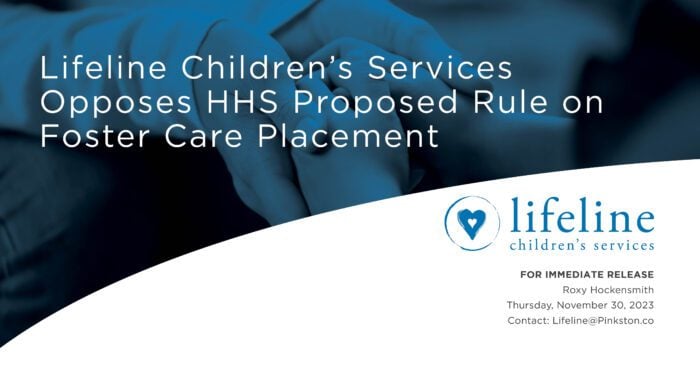Remember Past Loss
The experience of moving to a new home, town, or state can be very challenging for children of all ages. This difficulty is particularly true if children are part of your family through international, domestic, or foster care adoptions. Even if your children do not have solid, explicit memories of previous moves, their traumatic history includes loss of biological family, familiarity, a physical home, culture, country, friends, previous caregivers, school, sports teams—the list can continue. Each move—into an orphanage, between foster homes, and into their forever family—has impacted their security, felt safety, and attachment. Therefore, the prospect of moving to a new place can bring about fear and anxiety in your child.
Children at different developmental stages will handle the idea of a move in different ways. Although older children may be able to verbalize their fears, anger, or excitement, younger children may express fears through behavioral regression. Your child might present as withdrawn and clingy, angry and controlling, or overly nonchalant and disengaged with the move. These behaviors express their increased need for felt safety, security, and connection.
Emphasize Family Security
Preparing children for the move can help them safely process their emotions. The first thing you can do to help prepare your children is to start, or continue, a dialogue about being a family no matter where you live. “We stick together.” Emphasize that a house does not make a family; instead, relationships make a family. If age-appropriate, you can make a game with this concept. Altogether, shout, “We are a family!” Then, move to new locations around the house, such as the living room, kitchen, driveway, etc. In each place, shout, “We are a family in the living room,” “We are a family in the kitchen,” etc. Incorporating fun and laughter will ease anxiety and stress for you and your child. Highlighting that you will always be a family no matter where you go or live is vital.
If you have taken vacations or a parent has been on a business trip in the past, utilize these experiences to help your child understand that location doesn’t determine the security of your family system. Ask them questions such as, “Were we a family when we went camping? Were we a family at the beach? Were we still a family when you stayed with Grandma or when Dad went out of town?” (Yes, yes, yes, and yes!) Nevertheless, being mindful and aware that moving locations in the past could have meant the loss of relationships and caregivers for your child. Experiencing these fears around loss is natural and should not be ignored.
Meet Emotional Needs Through Involvement & Reassurance
As you prepare for the move, remember that your child’s individual emotional needs are still present. Make sure they are being met even in the midst of all of the “to-do’s” of the move. Try your best to maintain your normal eating, hydration, resting, and sensory input schedule. At a minimum, offer food every two hours, and ensure that your child is hydrated on moving days.
Simply seeing your family’s items being packed or in a box could cause fear, anxiety, and a meltdown. As you are packing, communicate to your child that everything that goes in the box will be at the new house. Allow them to help you pack and to place things in the boxes. Let them pack things that are important to them (even the wadded-up gum wrapper on their desk). If it is important to them at that moment, don’t minimize or dismiss it. Allow them to pack those items anyway, as this will help them feel like they have some control. Remember: moving is not the time to purge as much as you’d like, as this can be very overwhelming to your child. If you’d like to purge their things during the move, put them into a box, and bring them with you on your move. If your child has not asked for them/missed them in six weeks, go ahead and donate them. Loss, even of old items, can be a trigger for your children.
Additionally, do what you can to take the scary out of the unknown. If possible, take pictures of the new house and go through them with your child. Talk through where their bed, toys, clothes, etc., will go in the new home. Doing this gives visible reassurance of where their family and things will go when they move. Try to introduce the new neighborhood: where you’ll go for gas, the new grocery store, library, school, church, etc. Places, people, and items in your child’s current daily routine are the most critical changes to prepare them for in the new location.
Help Children Say Goodbye
Hello and goodbye rituals are also crucial. Depending on the age of your children, you may want to schedule final play dates with their best friends and opportunities for those friends to visit in the new house (if you aren’t moving too far away). Scheduling time for Facetime/Video calls may also encourage your children. We often promise that our children will see their friends again, but time gets away from us, and it doesn’t happen. Broken promises deeply impact trust, so try to put these dates on the calendar and stick with them.
Similarly, allowing children to say “goodbye” to their favorite restaurant or park can help ease the transition. Ask your child who they want to remember, and take pictures of those people for your child to have in their room. These individuals could be their teachers, friends, or the mailman they wave at every day. Don’t underestimate the importance of these individuals in your child’s life. Give your child the opportunity to preserve relationships and memories by asking instead of assuming who and what is most important to your child.
Additional tips:
- Don’t change too much too quickly. For example, if your child is currently sharing a bedroom, don’t move them straight into a room alone. If they currently sleep on the same level of the home as you (their parents), try to maintain this in the first few weeks/months of the new house.
- Be willing to sit in the emotions of loss and grief with your child. Allow these emotions to prompt discussion about leaving their family of origin, country of origin, etc.
- Expect regression, especially around sleeping, bathroom habits, and clinginess. Expect it, and meet your child with grace and compassion.
Moving is a big transition, and it impacts every family member differently. By prioritizing your children’s physical and emotional needs and helping them experience felt safety during the transition, you can mitigate some of the tension that your family might be experiencing. Give yourself, your spouse, and your children grace as you embark on a new family adventure!
Developed by: Lynn Beckett, LBSW, TBRI Practitioner, & McKayla Brown, MS




